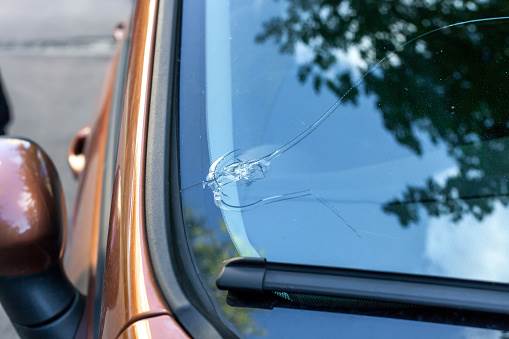Post Preview
Table of Contents
- Introduction to Windshield Safety
- The Hazards of Operating a Vehicle with a Cracked Windshield
- Common Quick Fixes
- Financial Impact of Repairing Windshields
- When to Seek Help from Professionals
- Preventive Measures
Introduction to Windshield Safety
Windshields are more than just a transparent shield from the elements. They play a crucial role in your vehicle’s structural integrity and safety. Yet, it’s surprising how often minor cracks and chips go unnoticed or ignored by many drivers. Is it safe to drive with a cracked windshield? Realizing the significance of an utterly intact windshield can improve your driving safety and help avoid accidents. It is dangerous to operate a vehicle with a damaged windshield. It is not just about visibility; it also affects the car’s structural strength. A damaged windshield may compromise the structural stability of the vehicle. Recognizing the dangers and promptly addressing any damage can significantly improve road safety.
The Hazards of Operating a Vehicle with a Cracked Windshield
Driving with a cracked windshield poses safety risks and can lead to legal troubles. Many states have laws that prohibit operating vehicles with windshield damage due to safety concerns.
Failure to comply with these regulations may result in fines and penalties, which can be avoided by taking proactive measures. Police departments often issue tickets for violations to emphasize the importance of safe driving.
In addition to safety hazard, a compromised windshield may fail during a collision, compromising its occupants’ protection. The windscreen is a visibility aid and a protective barrier, preventing objects from entering the vehicle during an accident. The car’s structural integrity heavily relies on the windshield’s ability to effectively absorb and distribute collision forces.
Common Quick Fixes
Quick fixes like tapes provide minimal stability and offer limited protection against debris entering cracks without stopping them from spreading. Windshield repair kits are suitable for chips. They may not be effective for larger cracks or complex damage as they typically contain inadequate resin for such repairs. DIY solutions, like nail polish or super glue, are best suited for chips and offer minimal benefits, although they may temporarily hold cracks together until proper repairs are made. Each approach is meant as a solution until you can seek assistance from a professional. They are not meant to be fixed and shouldn’t be relied solely on to ensure the safety and durability of your vehicle in the long run.
When to Seek Help from Professionals
It’s vital to recognize when it’s necessary to seek help from a professional. Usually, if a crack is longer than a dollar bill or obstructs your vision, it’s recommended to seek assistance from an expert; expert guidance and proper repairs can prevent the crack from expanding and guarantee your safety while driving. Professionals will evaluate the damage. Examine any underlying causes that might have resulted in the crack initially. To prevent deterioration, you should reach out to experts as soon as you detect any signs of damage.
Financial Impact of Repairing Windshields
The expenses associated with windshield repairs may vary. Factors like the extent of damage the vehicle makes, and the type of windshield material can influence the cost. Nonetheless, many insurance plans cover repairs, making them an affordable option. Delaying repairs could lead to replacements down the road. Many insurance providers opt for repair over replacement because it is usually more cost-effective. Therefore, dealing with any damage promptly can help save both time and money.
Preventive Measures
It’s always better to prevent than to cure. Simple steps such as maintaining a distance from trucks, avoiding temperature changes, and regularly checking your windshield can help prevent cracks. Proactively caring for your windshield can help prevent repairs and future risks.
- Prevention Tips: Keep your distance and steer clear of vehicles that could kick you debris. Maintaining a distance reduces the chances of rocks or road debris hitting your windshield. Handle temperature changes gently. Avoid sudden shifts, such as pouring water on a frozen windshield. Instead, defrost gradually to reduce stress on the glass.
- Regular Checkups: Periodically inspect your windshield to catch and address issues before they worsen. Routine checks can pinpoint spots and allow early intervention to prevent cracking.
Following these measures can also prolong the life of your wi shield. Ensure that your vehicle stays safe and ready. Regular inspections and cautious driving practices contribute to overall vehicle well-being and safety.








